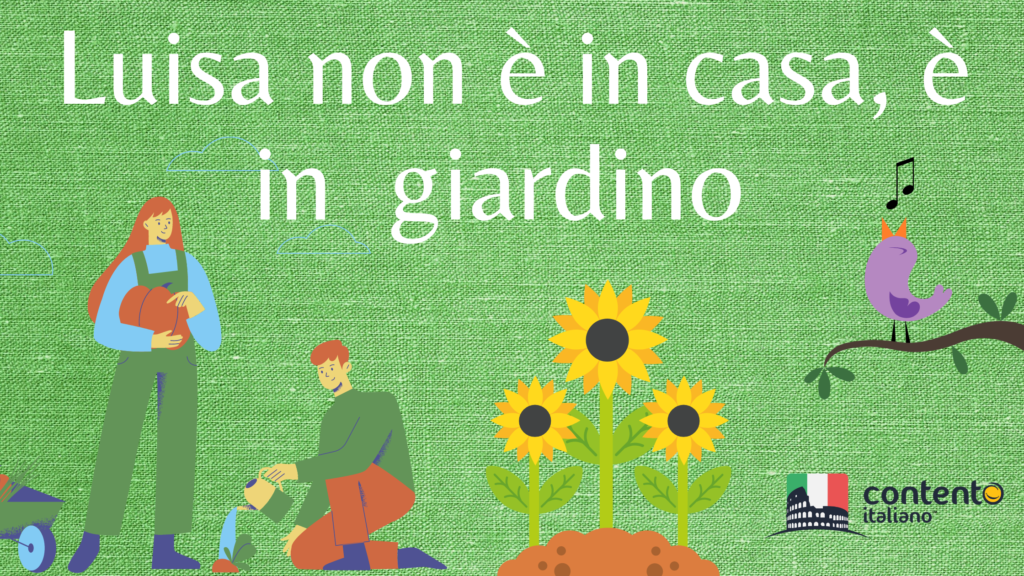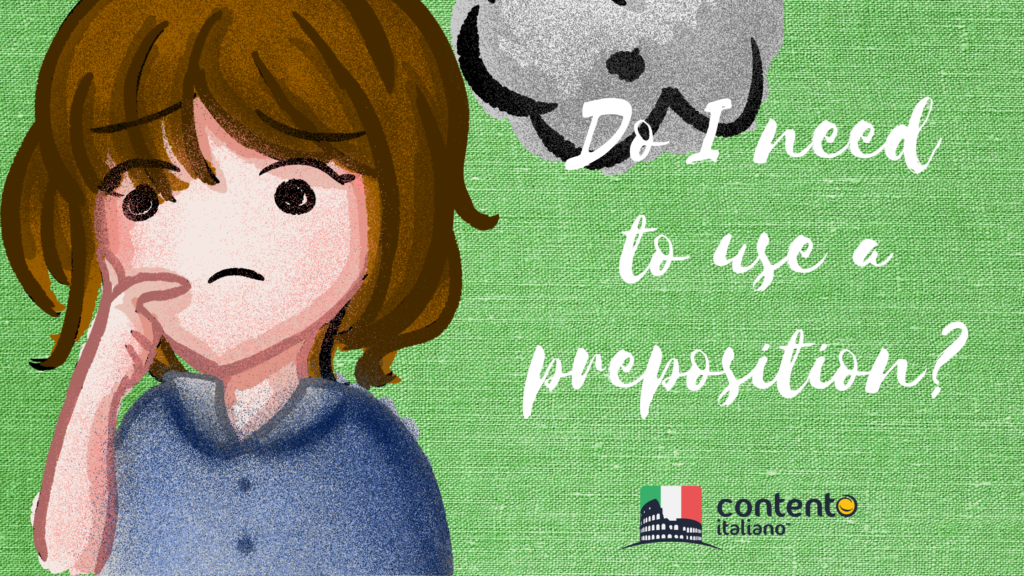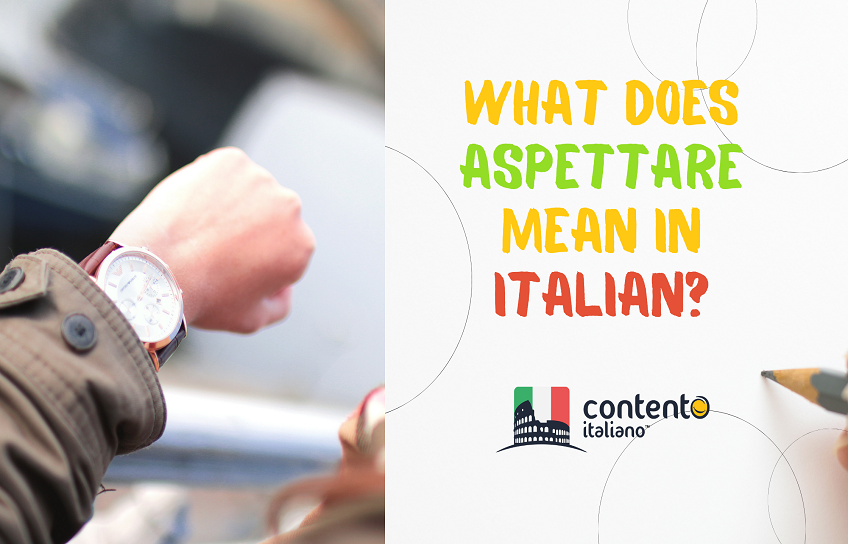If you are considering learning Italian, you may have asked yourself if Italian grammar is difficult.
Many native English speakers or, in general, those who have not had much experience of Romance languages, find the Italian grammar baffling and intimidating, and feel that it has too many rules.
Italian grammar can be complex and challenging, particularly for those learners who wish to progress from higher intermediate to advanced level. However, it is entirely possible to overcome these challenges without being overwhelmed by them. The best strategy for this is to learn grammar at a gradual pace and to focus on communication and getting your message across, perfection in the grammar will come gradually and through exposure to examples over time.
In this article I collated what I see are the most frequently occurring difficulties for learners of Italian, English speakers in particular. Look out for tips on how to overcome these difficulties throughout the article.
Read on to find out more.
How hard is Italian grammar? The things that native English speakers find difficult
Grammar is considered to be “the structure and system of a language” and to consist of syntax and morphology (how words look), so this article is going to deal with both aspects of the Italian language.

1. Gender
- Knowing whether an Italian word is masculine or feminine can be tricky
Italian is a gendered language. This means that each word (or noun) is either masculine or feminine in gender.
As a general rule in Italian words that end in -a are feminine and words that end in -o are masculine. For example, la strada (the road/ way/ street) is a feminine noun and l’ albergo (the hotel) is a masculine noun.
There are many Italian words which don’t follow this rule, however, so knowing what gender they are can be difficult sometimes.
For example:
- There are words ending in -A which are masculine, such as il clima (the climate)
- There are words ending in -O which are feminine. For example la mano (the hand)
- Words ending in -E can be either masculine or feminine. Two examples are la fame (hunger – feminine) and il televisore (the TV – masculine).
This may be confusing for a learner of Italian, as you can’t always rely on the ending letter of a word to detect its gender.
To detect a word’s gender in Italian, you may have to rely on how the definite article “the” looks (if there is one!), your memory of the gender of that word, or other elements in the sentence, if there are any.
2. Gender, number and verb agreement
In language, gender and number agreement are needed to make grammatically correct sentences.
An example of gender and number agreement in English is:
- He fed his cat -The personal pronoun he (masculine singular) agrees with the possessive adjetive his (also masculine singular)
In the Italian language, gender and number agreement is a lot more widespread than in English because 1) Italian nouns are intrinsically either masculine or feminine and 2) because there are more parts of speech that inflect (or vary) in gender and number.
These are:
- Articles (definite and indefinite)
- Adjectives
- Past participles
None of these parts of speech vary in gender and number in the English language.
Here is an example of how articles and adjectives inflect in Italian:
- La mia famiglia è italiana (my family is Italian). This sentence contains three parts of speech that vary in gender and number:
- The definite article la (feminine singular) – In English this is simply the
- The possessive adjective mia (feminine singular) – In English this is simply my
- The adjective italiana (feminine singular) – in English this is simply Italian
Here is an example of how past participles inflect in Italian:
- I miei familiari si sono riuniti (my relatives have gathered) – The past participle riuniti (gathered) is in the masculine plural form, since it refers to my relatives, which is masculine and plural.

TOP TIP:
If you have recently started learning Italian and the amount of gender and number inflection is overwhelming for you, don’t worry, because people will still understand what you are saying in the vast majority of cases, even though your sentence won’t be 100% correct grammatically.
3. Articles
- Remembering the articles
Definite articles are used to refer to a particular item, such as “the cat”, as opposed to “a cat”.
Italian has many more definite articles than English, which only has one (“the“). This is because, like we said above, Italian articles vary in gender and number.
One stumbling block for learners of Italian is remembering the definite articles:
| Singular | Plural |
|---|---|
| IL | I |
| LO (masculine) / LA (feminine) / L’ | GLI (masculine)/ LE (feminine) |
- Understanding which article goes with which word
Provided that you have memorized the definite articles, as a learner of Italian another stumbling blcok may be understanding which of the definite articles to use.
Italian does obviously have rules for which article should be used depending on the beginning letters of the word it precedes. For example, words beginning with “st”, as well as other letter groupings, want the article “lo”, as in lo studente.

TOP TIP:
Having to remember all the rules for which of the definite articles to use can be overwhelming. It might be best to pick these up naturally through repetition over time. If, as a learner of Italian, you incorrectly say il studente, rather than lo studente, people will still understand you.
- Understanding when to use the article “the” at all
Usage of the definite article “the” differs between Italian and English, and this often leads a learner of Italian from English to 1) incorrectly leave “the” out when it’s needed 2) incorrectly put “the” in when it’s not needed.
As a general rule, the article “the” is used more often in Italian than it is in English, and so English speakers sometimes forget to use it.
Below are examples of things that learners of Italian might say:
- Prendo mia macchina (incorrect)
The correct version of this sentence is prendo la mia macchina, because in Italian the definite article is required in front of possessive adjectives, except when naming certain family members such as mia madre or mio padre.
- Mi piace il te’ con latte (incorrect)
The correct version of this sentence is mi piace il te’ con il latte, because the definite article in Italian is used before a noun in the vast majority of cases.
- Lui cerca ricchezza (incorrect)
The correct version of this sentence is lui cerca la ricchezza. This is because, in Italian, unlike English, the definite article is required before an abstract noun.
Consider the two examples below. The sentences are very similar, but one uses “the” and the other doesn’t. In this case both sentences are correct, but they differ slightly in meaning:
- Vado nel salotto (I’m going to the living room – with NEL incorporating the definite article IL) – This phrase is used to describe a house in a more objective/ detached manner, or if you want to pit the living room against another room of the house. For example: Nel salotto ci sono due finestre ma nello studio non c’è neanche una finestra (there are two windows in the living room but not even a window in the study)
- Vado in salotto (I’m going to the living room) – This phrase is used when talking about your house or a friend’s house, or any house that you are familiar with.
4. Prepositions
Prepositions are useful in spoken languages because they flag the function of words within a sentence. Prepositions replace the Latin cases and make speaking and understanding Italian easier and more convenient than Latin.
For example, the Latin phrase “quarum unam” becomes “one of which” in English and “una di queste” in Italian. The preposition “di” (of) replaces the Latin partitive genitive case (“quarum”, an inflection of the pronoun “qui”, meaning “who”).
For a more detailed discussion of this topic, you can read my article “Does Latin Help With Italian?“.
Italian prepositions are a stumbling block in several ways for many students, although Italian is, overall, a much easier language than Latin.
Here are some of the challenges presented by Italian prepositions:
- Remembering the meaning of Italian prepositions can be tricky
One common hurdle for students of Italian is remembering what the Italian prepositions correspond to in English. You will see from the list below that some of the Italian prepositions have more than one meaning in English.
- Di = of
- A = at / to
- Da = from / to
- In = in/ at
- Con = with
- Su = on / about
- Per = for
- Tra / fra = between
- Using Italian prepositions correctly takes a lot of practice
Italian prepositions are not always used in an intuitive way for an English speaker, so learning to use them correctly can take a lot of practice for a learner of Italian.
As an example, the Italian preposition “in” does not always correspond to the English preposition “in”. Consider the sentences below:
- Vado in macelleria = I’m going to the butcher’s
- Oggi non sono in ufficio = I’m not in the office today
- Mi dispiace, Luisa non è in casa oggi = I’m sorry, Luisa is not at home today
- Andiamo in vacanza in Italia = let’s go on holiday to Italy
- I bambini sono andati in cucina = the kids went to the kitchen
The Italian preposition “in” can correspond to “to”, “in”, “on” or “at” in English.
In Italian, sometimes there is more than one preposition that can correctly be used, often with only a slight change in meaning between the two options.
For example, the two sentences “Luisa non è a casa oggi” and “Luisa non è in casa oggi” both mean, in English, “Luisa is not at home today”, and they can be interchangeable in Italian. However, if we change the context of the sentence, then there is a slight difference in meaning between the two.
In the sentence “Luisa non è a casa oggi, è al lavoro” the “a” indicates a generic location (at home vs at work). However, if we said “Luisa non è in casa, è in giardino” the “in” indicates a speficic location (in the house vs in the garden).

As another example, the two sentences “Vado al bagno” and “Vado in bagno” both mean “I’m going to the bathroom” in English, and can be interchangeable in Italian. However, each is more appropriate to a certain context: “Vado al bagno” indicates a generic bathroom (so this could be used in a public place) whilst “Vado in bagno” tends to indicate your own bathroom or the bathroom in a house you’re familiar with.
Below are two more examples of Italian preposition usage which can be confusing for an English speaker:
- Faccio una passeggiata al sole (I’m having a walk in the sun). Use of the preposition “al” (which normally means “at”) in this way can be confusing for a learner of Italian. This sentence literally says “I’m having a walk at the sun”.
- Ci vediamo tra dieci minuti (see you in ten minutes)= “in” ten minutes. The preposition “tra” (which normally means “between”) can be confusing here. This sentence literally says “See you between ten minutes”. One way to think about it is “see you between now and ten minutes’ time”.
Students of Italian Mike and Janet Sadler studied Italian for two years after a long career in French and Spanish teaching and translation. When Mike and Janet were asked what they found most difficult about learning Italian, this is what they said:
The thing we found the hardest was prepositions, in particular “di” and “da”. We know that the only way to master that kind of thing is exposure and usage.
Mike and Janet sadler
The best way to learn how to use Italian prepositions is to be exposed to, and practise, as many examples as possible in context. This way, the correct usage of prepositions will sink in naturally over time.
Another issue with Italian prepositions for learners of Italian is knowing whether a prepositions is needed at all. Take the expression “Di più” (more) in the sentence “Devo fare di più” (I have to do more). This literally translates to “I have to do of more”. “Di più” is a set expression which is used to convey “a greater amount”.
Italian also has a number of verbs and expressions which want to be followed by specific prepositions such as “Aiutare qualcuno a…” (to help someone to…)

TOP TIP:
When learning Italian prepositions, it may help to make a note of specific expressions which are counter-intuitive to you (such as “vado al mare”, literally “I’m going at the sea”) and practising them in context. Making a literal translation from English into Italian may lead you to make mistakes.
- Compound prepositions
Compound prepositions are prepositions that are formed by merging the definite article “the” with each preposition. In Italian, this produces 25 compound prepositions (5 articles and 5 prepositions).
Compound prepositions can be challening for a learner of Italian because, as a beginner, you might need to answer a series of questions:
- Do I need to use the definite article with this noun?
- Which definite article is the correct one?
- Do I need to use a preposition?
- Which preposition is the correct one?
- What is the correct merge of article + preposition?
| IL | LO | L’ | LA | I | |
|---|---|---|---|---|---|
| A | al | allo | all’ | alla | ai |
| DA | dal | dallo | dall’ | dalla | dai |
| DI | del | dello | dell’ | della | dei |
| SU | sul | sullo | sull’ | sulla | sui |
| IN | nel | nello | nell’ | nella | nei |

5. Pronouns
Learning to correctly use pronouns can be a headache for a learner of Italian. Pronouns are, in fact, one of the most difficult topics of Italian grammar.
Here are some of the challenges posed by Italian pronouns:
- Use of multiple pronouns next to each other
Multiple pronouns can be used next to each other in Italian like in the sentence “Te lo faccio” (I’ll do it for you). The literal translation of this sentence into English is “for you it do”.
This highlights a key difficulty for English speakers with Italian pronouns, that is, their usage is very far from the way pronouns are incorporated into English sentences.
The Italian pronouns themselves are different from pronouns in English. For example “Ti” in English is expressed as two separate words: “for you”/ “to you”.
- Distinguishing different types of pronouns
Different types of pronouns in Italian (such as reflexive pronouns and object pronouns) can be identical in some cases, and so they can be mixed up.
As an example, consider these two sentences:
- Mi dai una mano? (can you give me a hand?) – Here the pronoun mi is an object pronoun
- Mi sono alzato molto presto oggi (I got up very early today) – Here the pronoun mi is a reflexive pronoun (I got myself up very early)

TOP TIP:
Which type of pronoun is used depends on the grammatical structure of the sentence. Native Italian speakers recognise this structure in an instant, without even being aware of it. If you are learning Italian, this might take a little practice, but will get quicker over time. Sometimes the context of the sentence may be useful in understanding which type of pronoun you are dealing with.
- The placement of pronouns
Pronouns in Italian can be placed in different location within a sentence. If you are learning Italian, you might find this confusing at first.
Here are some examples:
- Ti vorrei insegnare l’ italiano (I would like to teach you Italian) – Here “ti” means “to you” and is placed before the verb.
- Vorrei insegnarti l’ italiano (I would like to teach you Italian) – Here “ti” also means “to you”, but it has been glued to the end of “insegnare” instead. It is possible to append pronouns to the end of a verb in the infinitive form.
- Use of the formal “lei”
To address someone formally, Italians use the third person singular pronoun “lei” (her).
Use of the formal “lei” in Italian can be confusing for speakers of other languages but, in particular for native English speakers, who currently only use “you” to address someone.
One useful way to think about the formal “lei” is that it’s like using the third person singular to refer to “her majesty”, although in old Italian the “voi” (plural) was also used as a formal address.
If you are interested in the cultural aspect of using the formal address in Italian, and to understand the nuances of when it should be used, check out this article.
6. Verb conjugations
Overall, Italian verbs change (or inflect) a lot more than English verbs, depending on verb moods and tenses. This can be overwhelming for a learner of Italian.
Here are some of the main challenges around verb conjugations:
- Remembering the conjugations
English verb conjugations are relatively easy, since the only change throughout the conjugation is the third person singular (he, she, it) which normally adds an “s” at the end.
In contrast, Italian verb endings are a little more complicated, since there are more terminations to remember.
In Italian there are also many irregular verbs, which makes verb conjugations hard to predict, because they do not vary from person to person in the way that you would expect. Not to mention having to remember which verbs are irregular and which are not!
In the example below you can see the verb andare (to go). Look at how the vad- root on 1st, 2nd and 3rd person singular is replaced by the and- root in the 1st and 2nd person plural.
| Italian | English |
|---|---|
| Io vado | I go |
| Tu vai | You go |
| Lui/ lei va | He/ she goes |
| Noi andiamo | We go |
| Voi andate | You go |
| Loro vanno | They go |
Italian verbs in different tenses and moods can occasionally look quite similar for different conjugations. For example andrai (you will go) and andrei (I would go).
- Understanding the tense usage
Tense usage in Italian does not exactly map to tense usage in English, so a learner of Italian might need a little practice to learn to use Italian tenses correctly.
Consider the present tense in Italian, for example vedo (I see). This can also be used to indicate a future action that’s planned to happen, such as vedo Laura domani (I’m seeing Laura tomorrow). In English, this function is carried out by the present continuous, not the present tense.

TOP TIP:
When learning tense usage in Italian, especially the two past tenses passato prossimo and imperfetto, try to get exposure to as many examples as possible, because these will provide context within which a certain tense is being used.
7. Moods of the verb
The function of verb moods is to set the tone for verbs in a sentence.
Italian has seven verb moods: indicative, infinitive, gerund, conditional, subjunctive, imperative and participle.
There are two challenges related to verb moods for learners of Italian:
- Using the correct verb mood at the right time
- Remembering how to conjugate the verbs within each verb mood
The table below contains an example sentence for each Italian verb mood and its English translation:
| Verb mood | Italian | English |
|---|---|---|
| Indicative | Domani vedo la mia amica | Tomorrow I’m seeing my friend |
| Infinitive | Non vedo l’ ora di vedere la mia amica | I can’t wait to see my friend |
| Gerund | Io e la mia amica stiamo prendendo il te’ | My friend and I are having tea |
| Conditional | Vorrei vedere la mia amica | I’d like to see my friend |
| Subjunctive | Vorrei che la mia amica mi venisse a trovare | I wish my friend would come to see me |
| Imperative | Ho detto alla mia amica: “vienimi a trovare!” | I said to my friend “come and see me!” |
| Participle | Salutata la mia amica, sono tornata a casa | Having said goodbye to my friend, I came back home |
If you are interested in finding out more on the usage of all Italian moods and tenses, our series of articles on Italian conjugations may be for you!
-

You Have Completed The Duolingo Italian Tree – 13 Activities You Should Do Next (And Why They Are Effective)
-

The Verb Aspettare (To Wait) In Italian: A Complete Guide On Meaning, Conjugation And Usage (With Examples)
-

The Italian Verb Vedere (to see): Conjugation and usage with audio examples
In conclusion: is Italian grammar difficult?
Italian grammar presents several challenges for learners. In this post, we talked about seven main aspects of the Italian grammar that can be confusing for all learners of Italian but, in particular, for English speakers.
Don’t let these complexities put you off from learning Italian. It is totally possible to overcome them with regular practice and exposure to examples. Italian is, in fact, one of the easiest languages out of all Romance languages.





